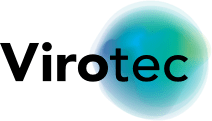The reagents used in Virotec technologies have several remarkable characteristics that make them ideal for environmental remediation for soils and water. Virotec’s Reagents have an excellent trace metal and metalloid binding capacity and, equally importantly, elements that are bound when the material is used to treat contaminated water or soil are held very tightly and only a small proportion can be released, even if the solid residue is leached at a pH of 2.88 (TCLP procedure). Furthermore, the longer the spent Virotec reagents are left to age after use, the more tightly the bound elements are held. As the residue ages some new metal-trapping capacity develops.
Though the unique binding mechanism of Virotec’s technologies metals are;
- Trapped by adsorption, absorption and crystallization
- Bound metals and metaloids, such as As, are exceptionally difficult to remove, even if leached at a pH of 2.88 (i.e., with TCLP or MEP)
- The longer the reagents age the more tightly bound the trapped metals become
- Metals-enriched reagents are typically classified as “inert” waste
- Metals are bound in non-bioavailable forms, but phosphorus and other micronutrients, such as calcium, are bound in a bioavailable form
A full technical paper on the long term stability of Virotec Reagents is available, please complete the form below.

